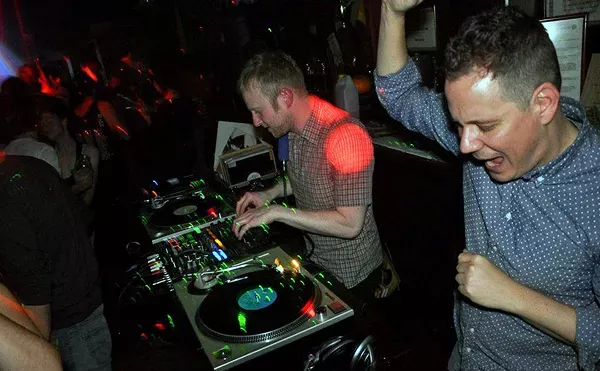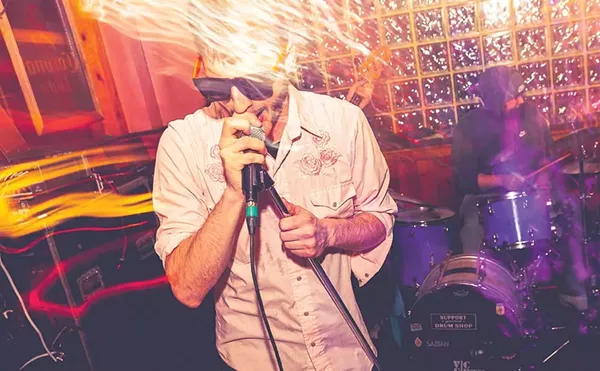When they left Detroit in January 2002, the producers of The Detroit Experiment knew they had made a bit of history. They had convened a reunion-cum-recording session of Detroit musicians from Motown vets to jazz legends to young rappers. They had met their faves and heroes. They had seen grown men weep at the beauty of music. They had pinched themselves to remind themselves it was all real.
What they didn’t know was whether five days of studio time, and a stack of airline tickets to fly folks from around the country and beyond, and a cast of dozens had produced a record to reflect their ambition.
“I didn’t think it was all there, I was worried,” Andy Blackman Hurwitz said the other day from the offices of his Ropeadope label in New York. The fear would linger that “though we had these great moments, it wasn’t going to be like this cohesive piece or musical statement.”
The Philadelphia Experiment, a similar musical love letter to Hurwitz and collaborator Aaron Levinson’s home town, in comparison, had gone down smoothly: three days to record with a crack rhythm section — pianist Uri Caine and bassist Christian McBride from disparate jazz camps, Roots drummer Amir Thompson from hip hop — and a changing cast of other players; then six days of mixing. The record came out to a nice buzz and respectable success for an indie release.
What could more logical than repeating the experiment on an even larger scale in Detroit? There were all these parallels and criss-crossing connections. One dirty, gritty, industrial city had boomed and gone bust with textile mills, the other with auto plants. Both had large African-American communities. Both had revered jazz scenes. One city produced the Motown sound; when that ebbed, Philly International copped and elaborated on the soulful assembly-line formula. Both cities had a working-class ethos that helped curb music scene egos and lowered the threshold for collaborations.
There was, as co-producer Levinson put it, “a natural sanguinity.”
Come on down
“It was a little bit of trial and error in who we got in touch with and what kind of response we got,” Hurwitz said, describing the process. Carl Craig, one of the founding architects of the techno sound, was the first recruit. Then came trumpeter Marcus Belgrave, whose résumé ranges from the Ray Charles band of the 1960s to the Lincoln Center Jazz Orchestra of the 1990s.
“We had people lined up or we were talking to people from Kid Rock to the White Stripes,” continued Hurwitz. “But once we kind of got into Carl and Marcus … we kind of realized that trying to pull in Stevie Wonder or Kid Rock or whoever might be hot in the pop world might not necessarily be the best for this project.”
From Belgrave and Craig the roster grew dizzily: pianist Geri Allen and violinist Regina Carter (ex-Detroit jazz stars who owe much to Belgrave’s tutelage), bassist Jaribu Shahid, drummer-producer Karriem Riggins, former Blackbyrds saxophonist Alan Barnes, Motown producer-arrangers Paul Riser and Johnny Allen, rappers Invincible and the Athletic Mic League, multi-instrumentalist Amp (Mr. Fiddler) Fiddler, saxophonist Bennie Maupin in a rare return homecoming from California …
And once recording at the White Room began, said Hurwitz, word got around, cell phones rang. “Marcus would be like, ‘Oh, man, I’m in the studio — you won’t believe what’s going on here. You’ve got to stop by.’”
Not everything worked; for example, a large ensemble rendition of Stevie Wonder’s “Too High” with Riser and Allen at the helm.
“This guy started off when there was no tape,” Levinson said over the phone, radiating his enthusiasm at working with Allen, who goes back to the days of direct-to-disc cutter sessions. To anyone who makes records, Levinson maintains, Riser and Allen are as important as James Brown.
Still, “Too High” proved too much. At the end of a day of studio work, “it sounded like a high school marching band,” said Hurwitz. Too little rehearsal time.
At the other extreme, there was a simple gospel-flavored duet between Allen and Carter, spurred by listening to Aretha Franklin sing the tune “There is a God” on one of the many albums that Levinson had lugged to the sessions.
In all the studio craziness, said Hurwitz, every musician’s jaw dropped as the Allen-Carter rendition unfolded in a single take. Session percussionist Francisco Mora recalled the couple of “spiritually profound” minutes. Belgrave, said Hurwitz, “was actually crying … it was so beautiful.”
Tribal gathering
But the key to the recording is a connection between Belgrave and Craig: the sound of the Tribe collective. Belgrave was instrumental in that Detroit circle of musicians in the ’70s. And in current dance and electronic scene, Tribe records have enjoyed an up-from-underground resurgence.
Other cities had similar groups, but in Detroit, avant-garde aesthetics and self-determination politics met in Tribe, which was at once a recording label, a magazine, a circle of musicians and more.
One of the founders, trombonist Phil Ranelin, once called it “a survival technique” and a musical laboratory where “we were using each other as guinea pigs.”
Elsewhere musicians experimented with suspending the beat or even playing without rhythm sections. Detroiters tended to beef up the rhythm section. “People danced to Tribe,” Belgrave recalled the other day.
And Tribe’s affinity for the dance floor has inspired recent reissues like Message from the Tribe on England’s Universal Sound label and reissues and DJ remixes of Ranelin’s Tribe recordings on the Hefty label out of Chicago.
With any number of jazz and electronic musicians collaborating these days — and a recent JazzTimes cover proclaiming “jazztronica” as the future — Tribe has never seemed so prescient.
“I can take you out to a club in Philadelphia and you will hear someone spinning Tribe over the course of a night,” said Levinson. “They’re a staple here and in Amsterdam and in London and in plenty of other places.”
The White Room sessions included, among other Tribal touches, a new take on “Space Odyssey,” which Belgrave wrote and recorded nearly three decades ago along with Ranelin, saxophonist Wendell Harrison, pianist Harold McKinney, percussionist Roy Brooks and others. And Craig would take that Tribe vibe and run with it.
Techno touches
Unlike the other musicians, Craig was in the studio more to listen than to play.
“I was more interested in the performance being what I needed to manipulate later,” he wrote in a recent e-mail from the road. “Most of what I added, I played off of the musicians’ performances later from tape. I got a chance to listen to the material quite a bit before I added my touch.”
So the new “Space Odyssey,” for instance, rolls in on an enormous synthesized wave that bridges scenes and eras.
Belgrave’s reaction to the final product: “I said, damn! They put some kind of different kind of beats on it and some studio stuff to give it that electronic feel. But it’s a natural feel. It was quite an experiment.”
Sometimes subtly, sometimes dramatically, it’s those post-production touches from Craig, Riggins and others that give The Detroit Experiment a good deal of its continuity.
Hurwitz said that he shared his misgivings about cohesiveness with Craig after the sessions “and he just stepped up and went the extra mile and spent a lot of time tweaking songs. … There was a lot of time spent mixing, remixing, adding, subtracting.”
It seems to be working. Hurwitz noted that this is already Ropeadope’s most critically acclaimed release. There’s been attention from the BBC, a blip on the Japanese pop charts, a Top 10 showing on the American jazz charts. Jazzy Jeff, DJ Spinna, Christian McBride and Amir Thompson from the Roots have called or e-mailed props, he said.
And already there’s talk about a next experiment. San Francisco and Paris have been suggested, though Memphis seems the most likely successor, said Hurwitz. The experiments seem to be taking on a life of their own.
An edition of the Detroit Experiment appears Friday at the Detroit Music Awards at the State Theatre (2115 Woodward, Detroit). Call 313-961-5450.
W. Kim Heron is the managing editor of Metro Times. E-mail [email protected].





